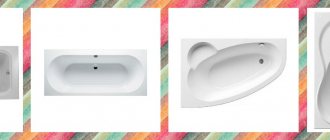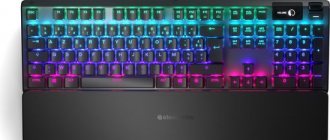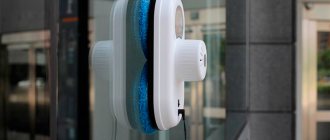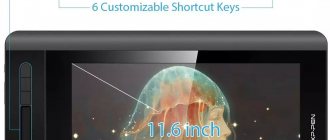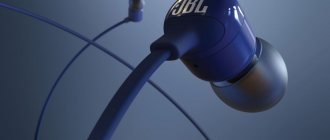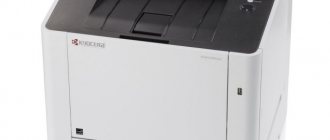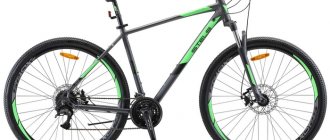Fps up » Accessories » You are here
Learn about the differences between these devices
Published 01.11.2019, 18:29 · Comments:15
There are many models from different manufacturers, most of which are membrane or mechanical. As a gamer and typist, I've used many different keyboards over the years, all with their different advantages and disadvantages. Some feel good in my hands, others don't. When you do a lot of work or play a lot of game, you need something that feels good on your fingers.
Now not all models are made the same, that some are made better than others, even if they are similar. Today we will compare the membrane and mechanical devices, we will give recommendations on who should use the membrane and who should use the mechanical.
Criterias of choice
When choosing a keyboard for a computer or laptop, users give preference to membrane-type devices. Design features make them more affordable than mechanical models.
It is based on a three-layer polymer film with high wear resistance. The main advantages of a membrane keyboard are the silent operation of the buttons and good tactile feedback, combined with an affordable price. When giving preference to one model or another, you should pay attention to:
- number of main and programmable buttons;
- connection type;
- noise level during operation;
- Possibility to customize the backlight;
- presence of a digital block;
- device weight;
- palm rest;
- tilt angle adjustment;
- software capabilities;
- number of connectors;
- support for simultaneous pressing of several keys;
- presence of a touchpad;
- appearance.
Ease of use also depends on the design of the case and the design of the keys.
Which keyboard should I use?
Both types have their pros and cons, each meeting different needs of many users. One particular model will not suit everyone! If you are on a budget and don't work on a laptop. Use something as simple as a tablet. But if you use a PC and a home theater, or in a home office. If you work and talk on the phone a lot, travel a lot, etc., then a quiet membrane will be enough for you as you won't have to worry about the size and weight. Students will enjoy the flexibility of a high-quality membrane because it is fun to use in video games and is very affordable.
Now, if you are a heavy user who is always typing stories, articles, coding or even a quick rewriter, a mechanical device will be a very good choice for you. Even gamers will benefit from using it in their games due to the speed it requires at times. The weight will be useful since the last thing you want your keyboard to do is film around your desk while trying to trick another player into mistakenly running into a wall and shooting themselves in the face. There are ways to make your mechanic quieter by using O-rings if you want to use it in a home office.
The best thing to do is to find a place that allows you to try different types and find the one that suits your needs, as it is important to find out what works best in your fingers. Choose what works best for you.
Maintenance of membrane keyboards
Over time, dust and dirt accumulate in the keyboard. To clear it of debris, you need to:
- First disconnect from the computer.
- Turn upside down and tap lightly.
- Shake from side to side.
- Use a stiff brush to remove dust from the keys.
- Wipe them with a detergent solution or alcohol.
Solvents cannot be used to clean keys, as the plastic will be damaged. After cleaning, you need to lubricate all rubbing parts with a drop of silicone oil, and apply transparent varnish to the upper edges - this will keep the inscriptions longer.
Following simple rules will increase the service life of the device and ensure comfortable operation for a long time.
Scissor-Switch Membrane Keyboard
This is another small class in the family of membrane keyboards: it was distinguished based on the fact that such keyboards are widely used to equip laptops and other portable keyboards. The switch structure has rubber dome-shaped gaskets, but in order to connect the key cover to the rod, a special “scissor” mechanism made of plastic is used: this allows you to significantly reduce the length of its stroke required to operate the key compared to a classic membrane keyboard. Typically, a standard three-layer membrane is responsible for the electronics of a scissor switch keyboard. The shortened key stroke and less force required to activate it make this solution popular in the field of laptops and stand-alone portable keyboards.
Features of scissor membrane keyboard
- Key stroke length. Scissor membrane switches are not "full throw"; their typical travel length is 1.0–2.5 mm, in contrast to the 2.5–4.0 mm of classic membrane keyboards. When working with such a keyboard, it is almost impossible not to press all its keys all the way with each press.
- Sound. Of course, scissor membrane switches knock more noticeably than classic ones - the physical characteristics of their switches imply less rubber or silicone, which reduces the degree of shock absorption. Among other things, the scissor mechanism helps optimize the elasticity of the rubber, which results in a characteristic soft click when the key returns to its original position. You won't hear anything like this on classic membrane keyboards.
- Life time. Most standard scissor keyboards list 5 million keystrokes, although the use of high-quality materials allows some manufacturers to guarantee up to 10 million keystrokes. They are more difficult to clean than classic membrane keyboards (since the keys themselves are much less movable), but they collect much less dust - due to the tighter arrangement of the key covers to each other. In this configuration, the keys need less space to travel - unlike conventional membrane keyboards.
- Actuation force. The factory operating force range is quite wide, starting at 65 grams (gram-force) and going up to 100. Most scissor membrane switches fall in the 65-85 gram range.
- Tactility (feeling from touch). In most cases, the feel of working with scissor keyboards is clearer and clearer than that of working with classic membrane models. They also feel more solid to the touch because the scissor switches stabilize the keys, reducing their lateral play during travel.
Mechanical Keyboard
Mechanical key switches are more complex and of higher quality than all others. Each key is equipped with its own switching mechanism, which is activated when sufficient pressure is applied to its cover (also known as a mechanical switch cover, key, keycap), located above the lowering rod mechanism. In most cases, a key is actuated (that is, the signal from it is received by the keyboard architecture and transmitted to the computer) approximately halfway through its stroke.
For example, if the length of its stroke is indicated as 4 mm before being pressed completely, such a key will be activated when it is “pressed” into the keyboard by about 2 mm. This means that while typing there is no need to press every key all the way. For those who touch-type, this reduces the overall—and often unnecessary—strain on the fingers.
Most mechanical non-linear switches are characterized by an increase in pressing resistance - it begins to increase after the key is activated: this prompts the user that this key has already completed the action and can move on to the next one. Another nuance that cannot fail to be noted is that the keys return to their original position faster than on other types of keyboards - this allows you to type at a higher speed.
Together, all these features allow you to implement numerous options for interacting with the keyboard. As a rule, such keyboards are distinguished by clearly distinguishable clicks (“clicks”) and increased resistance to pressing after the key is activated. And if such a combination of properties will definitely benefit an experienced typist, then even someone who is just learning to type touch will immediately appreciate the improvement in the speed and accuracy of typing.
The only category of users who, perhaps, will not benefit from using a mechanical keyboard are fans of two-finger typing, who like to hover a few centimeters from the keys, thinking for a long time about which one to press.
IMPORTANT: Since most of us are generally familiar with the working principle of classic membrane keyboards, we often press the keys too hard when switching to a mechanical keyboard. This leads to squeezing all its switches all the way - and therefore to a loud knock when working with them (this is in addition to the barely noticeable click of the switch itself, which is heard at the moment the key travels the middle of the key stroke). But once you curb yourself and get used to not fully pressing the keys, the overall noise level from typing on a mechanical keyboard is significantly reduced.
What types of mechanical switches should be differentiated?
Linear: Such mechanical switches do not signal in any way that the key has just been activated, and the moment of its activation passes unnoticed by the user. Linear pressure resistance means that it does not change throughout the entire key stroke. A classic example of such a switch is the Cherry MX Red model.
Low Tactile Feedback / Light Tactile : These mechanical switches have a low click feedback - they are barely audible and then exhibit increased resistance. Their tactility is often so weakly expressed that the feel of working with the keyboard on such switches can be mistaken for linear. Many consider them to be more ergonomic because they provide tactile feedback without making it feel like you have to push through the key travel to press it. An excellent example of such switches is Cherry MX Brown.
Quiet Tactile : These mechanical switches provide low click feedback (minimal sound during actuation and increased resistance afterwards). Their design includes an innovative system of muting both during pressing and returning the key to its original position, combined with moderate tactile feedback. These switches are very popular and are a good alternative to switches with low tactile feedback: after all, they still provide feedback - as well as audible feedback, albeit a quiet one. An example of such switches is Matias Quiet Click Switch.
Loud with High Tactile Feedback / High Audible Tactile: These mechanical switches have a very significant click feedback - when the key is activated, the sound is very clearly heard, and after it the resistance increases. The user cannot fail to notice this tactility, but it does not create any difficulties when pressing; At the same time, the knocking sound when typing creates the impression that you need to press the keys with increased force. A classic example of such a switch is Cherry MX Blue.
Loud and Tight with Tactile Feedback / High Force + Audible Tactile: Basically, it is impossible to find keyboards with such switches now - they are used extremely rarely, although they were once very popular at the dawn of the era of personal computers. IBM Model 'M' keyboards and some of the early Macintosh keyboards often weighed up to 5 pounds - that's 2.3 kg! – and were equipped with such switches on a spring mechanism. And if some still fondly remember the dynamics of such a keyboard, then everyone else can simply enjoy all the advantages of tactile switches, rethought in a more modern way - without unnecessary stress on the fingers and wrists, problems with which were often associated with working on such keyboards at one time (yes, they feel a bit like an old IBM Selectric typewriter).
Features of a mechanical switch.
- Key stroke length. Most mechanical switches are "full throw" and typically have a travel length of 3-4mm. With this travel length and the presence of significant feedback from the switch (audible, tactile, or both), it is almost always possible to prevent the keys from being pressed all the way down.
- Sound. Yes - mechanical keyboards are noisier than any other. This is due to the fact that the keyboard not only makes a “click” at the moment of actuation (somewhere in the middle of the key stroke), but also an audible knocking sound when the switch is pressed all the way at the end.
- Linear. At the moment the click is triggered, you can’t hear it, but you can almost always hear a light knock at the end of the key press.
- With (Low) Tactile Feedback / (Light) Tactile. At the moment of operation, a click is heard, but thanks to the tactile design, there is usually no subsequent knock.
- With quiet tactile feedback / Quiet Tactile. The click at the moment of operation is barely noticeable, and the subsequent knock of the key is often absent - all this thanks to the tactile design.
- Loud with high tactile feedback / High Audible Tactile: The click at the moment of operation is quite noisy, and the subsequent knock of the keys is of average audibility, but is not always heard.
- Life time. Most mechanical switches have a duty cycle of 50 million clicks. They are quite easy to clean, unlike membrane ones with dome-shaped caps, but they clog very slowly - this is due to the overall compactness and “tightness” of the design.
- Actuation force. Here the possible range of indicators is quite wide and starts from 45 grams, and ends with no less than 350 grams! That being said, most mechanical keyboards fall into the 45-65 gram category. For example, this is what the figures look like for the most famous switches on the market: Cherry MX Red – 45 g, Cherry MX Brown – 45 g, Matias Quiet Click Switch – 60 g, Cherry MX Blue – 50 g; from earlier switches that were used for PCs from IBM - Buckling Spring Model M (80 and later).
- Tactility (feeling from touch). Most mechanical switches have a crisper tactile feel than membrane switches. They also feel more tightly fitted, since any key movement - including horizontal play - is limited by the keyboard architecture itself.
What is tactility?
When we talk about keyboards, by tactility we mean the feedback—the feedback—that the user receives while pressing the keys; The main indicator of tactility is when and how the key is activated within the maximum length of its stroke. This feedback can be audible (making a “click”), tactile (creating increased resistance to pressing as you stroke), or visual (seeing your fingers move down with the key and then “bounce” back with its cap).
Membrane is bad
Membrane keyboard device
The first keyboards were mechanical, but the high cost of their production clearly did not contribute to the spread of such a phenomenon as a “personal computer” among typewriter lovers. In this regard, manufacturers switched to the production of membrane keyboards. They are indeed cheaper and easier to manufacture: a substrate with a contact grid is responsible for transmitting signals in such keyboards.
Often, such a substrate is made of a simple durable film, and current-conducting tracks are applied directly to it without any protection. The contacts are closed by pressing improvised “buttons”, bulges on the second layer of the keyboard, the membrane. This layer is a rectangular silicone sheet with domes protruding from it (therefore, in the English version, a membrane keyboard is referred to as a “rubber dome keyboard”). When you press a key, the path underneath it closes, and due to the ability of silicone to retain its shape, the key easily returns to its place.
It would seem, what could go wrong? After all, everything is so simple and easy.
Cons of membrane keyboards
One of the main disadvantages of traditional keyboards is that the key must be pressed all the way to make a contact. Only then will the click be registered. Needless to say, if you type on such a keyboard for a long time, your fingers will get tired? What if we add that over time, silicone hardens and requires more effort to change shape? Moreover, changing the physical properties of silicone does not require much time. As a rule, after a year, users notice that the keyboard does not press as easily as after purchase. For the strongest and bravest, who do not want to spare their joints, there is one more news: an increase in the rigidity of the membrane is directly proportional to the chance that it will rupture.
Here we suddenly come to the issue of reliability. In addition to the insufficient durability of the membrane, it is also worth noting the low resistance of the contact substrate to mass short circuits. Agree, every user sooner or later floods the keyboard with something. The membrane “board” is an excellent reservoir for liquid. If you flood it, it will most likely instantly go crazy and stop working. In most cases, forever, since the contact grid is a single element of the system, which, from contact with a conductive substance after the oxidation of the tracks, is completely eliminated from the game. One broken track disables an entire block of keys.
The indivisibility of the contact grid causes another problem: a membrane keyboard that operates via a USB interface is unable to transmit a signal for more than 6 simultaneous presses, unless the manufacturer has provided ways to bypass this limitation (so-called “anti-ghosting”). However, with some key combinations, even 6 presses are not always registered.
Plunger keyboards
Some . Don't fall for their tricks. Under the keys of plunger keyboards there are exactly the same membrane and contact substrate as on conventional membranes, which means they suffer from the same diseases. The only difference is in the sensation of pressing. At the same time, prices for plunger devices are significantly higher than for membrane devices.
